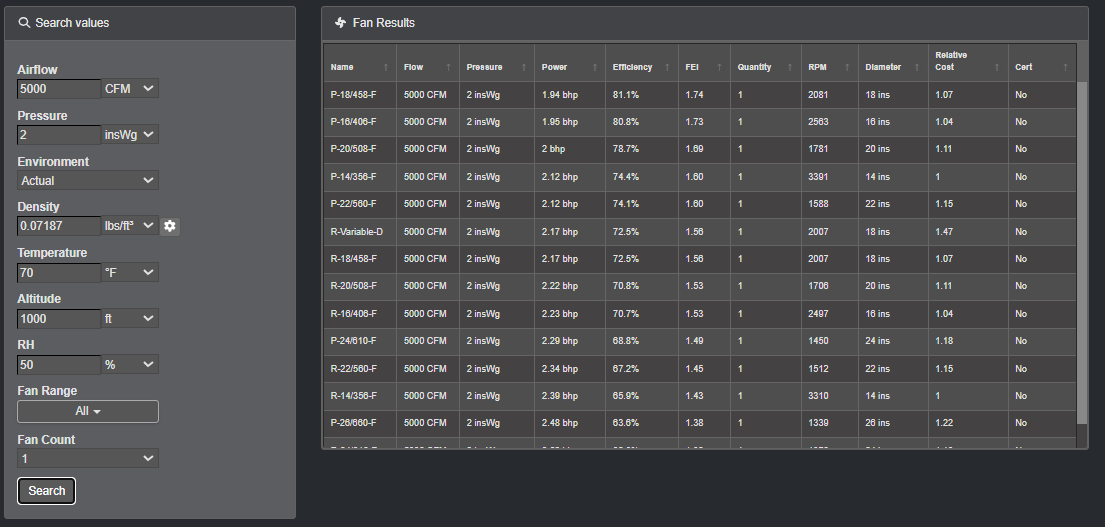
Don’t forget the density

Density and what it’s made of?
When selecting a fan for any air movement product, several requirements are taken into consideration such as the airflow (CFM), static pressure and efficiency.
These are often the requirements most thought of when you need to select a fan however one important factor that’s often forgotten about is air density which can impact the fan performance.
Air density refers to the mass of air per unit volume, and it’s made up of temperature, altitude, and humidity.
Fans are usually rated under standard air conditions with temperature at 70°F and density at 0.075 lb/ft³.
However often we find in real world conditions, if you’re designing a fan for a high-altitude location or a hot environment, the density of air will be significantly different from standard values.
Density’s impact on fan performance
The performance of a fan depends on the mass of air it’s moving, not just the volume.
If you have higher altitudes or temperatures (therefore lower density) fans produce less pressure and consume less power.
However, in cooler environments, fans produce more pressure but also requires more power.
There is a risk that you could oversize or undersize your fans if you don’t adjust for the actual air density.


Fan selection is more than just choosing the size of the fan.
For reliable and efficient performance, don’t forget the density.
Incorporating actual environmental conditions into your selection process ensures the fan you specify will perform as expected and save energy.
Here’s an example of how we choose a suitable fan based on your density values in WebFAN.

